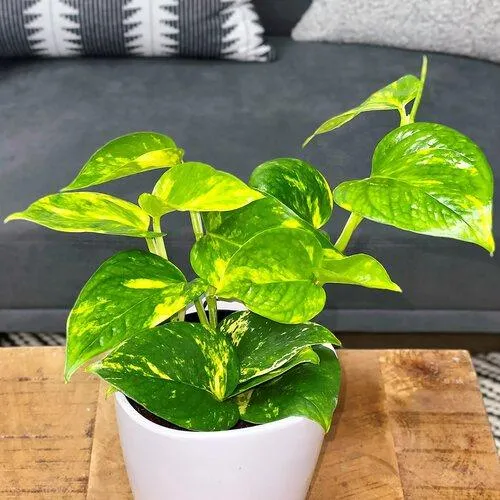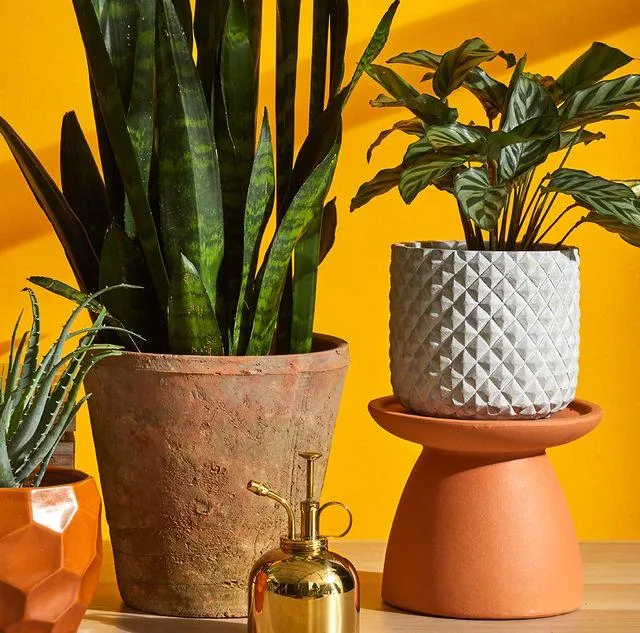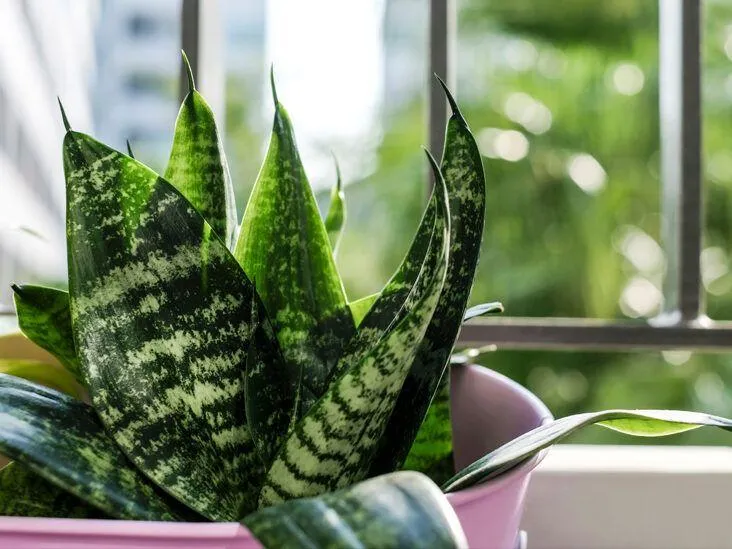A Guide to Popular Indoor Plant Types and Their Names
If you’re looking to introduce some green life into your home but aren’t sure where to start, indoor houseplants are a great option. From my experience living with plants over the years, I’ve learned they can add beauty, oxygen, and a sense of calm to any interior space. In this article, I’ll provide an overview of some of the most common and easy-to-care-for indoor plant varieties along with their common names.
Pothos
Pothos, or devil’s ivy, is perhaps one of the most popular and low-maintenance houseplants you can find. With its heart-shaped leaves in various color patterns like green, yellow, and white, pothos looks lovely hanging or trailing from a shelf, rail, or bookcase. I’ve never killed a pothos! It thrives in low to medium light and forgives you if you sometimes forget to water it. Just be careful not to overwater as its soil needs time to dry out between waterings. Pothos is practically impossible to mess up.
Snake Plant
Another nearly foolproof option is the snake plant. With its tall, upright leaves striped in shades of green and white, snake plants look amazing in modern decor. And in my experience, they’re tough as nails—mine has survived multiple weeks of neglect! They release moisture into the air and need watering just once every few weeks. Place snake plants where light is medium to low and watch them thrive with very little maintenance. You’ll be stunned by their resilience!
Chinese Evergreens
There are many varieties of chinese evergreen, but they share intoxicating, vibrant leaves in colors like deep green, burgundy, or variegated cream and pink. In medium to low light, these plants grow bushy and full. Their leaves hold beautiful deep ridging or patterns. I’ve found them rewarding to care for—just water whenever the top inch of soil dries. Every year, mine sends up cute new flowers, too! They might wilt if you accidentally soak the soil, but perk right back up when dry. A low-effort fabulous houseplant.
Spider Plant
- Spider plants are my absolute fave for trailing over a table or desk. Their long, grass-like leaves spill over the edges in a casual yet sophisticated way. And in my experience, they multiply like crazy!
- Every few months, you’ll get little plantlets sprouting from the mother plant on long stems—just clip them off to start new spider plants. I basically give spider plants away to friends now!
- They handle low light well and like their soil to dry slightly between waterings. Watching their tangled stems spill elegantly over a surface is totally relaxing.
I think their informal vining habit makes spider plants perfectly at home in modern living spaces. They add a wild, cottagecore charm without much fuss. 10/10 would recommend as a low-maintenance starter plant.

Peace Lily
With their broad, glossy leaves and dramatic white flowers, peace lilies really live up to their name by bringing a sense of calm. I’ve found they thrive in medium to low light indoors and enjoy high humidity. Here’s a pro tip from my plant parenting journey—whenever the soil is dry, dunk the whole pot underwater until it stops bubbling up through the drain holes. Peace lilies will let you know when thirsty by drooping leaves. Revive droopy leaves with a good soak and watch the plant perk right up!
Their flowers have a stunning waxiness and seem to bloom after even slight environmental improvements. Whenever I go away for a weekend, I come home to new blooms—it’s like the plant is congratulating me for returning! Peace lilies might look high maintenance, but in my experience have reasonably easy care needs.
ZZ Plant
Commonly called a zz plant, Zanzibar gem is near the top of my low-maintenance plant recs. With thick, waxy green leaves that resemble bamboo shoots, zz plants have an elegant yet hardy appearance. I swear mine goes months without water! Just keep them in low to medium light and barely ever water—they’ll thrive unbothered for ages. I’ve had one zz plant going strong in my office for over 4 years now with zero plant parenting skills required on my part. You can’t really mess these up.
They’re wonderful for neglectful plant parents and busy homes. Their stiff leaves stay standing tall and full even when dry. Zz plants bezzically need nothing from you but to exist in your space. A sure bet for anyone intimidated by plant care!
English Ivy
For a fast climbing or spilling vine, English ivy is a superb choice. Its small, glossy green leaves cling tightly as it grows upwards decorating walls or bookcases. You can train the stems to grow into shapes. English ivy thrives in low light and forgives irregular watering. From my experiences, it grows insanely quick covering large areas before you know it. Isn’t it cool how its aerial roots allow ivy to scale almost any surface?

It makes a lively, lush statement without fussy demands. Although be warned, English ivy can be invasive outdoors so keep it potted indoors! Overall an excellent option if you want plant coverage without much maintenance. The vivacious way it climbs adds verdant vertical interest to any room.
Philodendron
There are dozens of philodendron varieties with wildly different leaf shapes and colors. Some vines gracefully while others remain bushy. In terms of houseplants, their diverse forms make philodendrons super fun to collect. Any philodendron you get will thrive with medium to low indirect light and just occasional watering—I like to water mine around once a week until water drips through the drain holes.
They range from delicate heart-shaped leaves to monsterous tropical foliage up to 3 feet long. Philodendrons grow enticingly strange aerial roots as they climb. I’ve heard rumors some varieties even flower indoors which would mind blowing! Their care needs could not be simpler. For those seeking an adventure in plant parenthood, philodendrons rank among my top recommendations.
In closing, I hope this overview of common indoor plants and their names has helped explain some good options for bringing nature inside. Starting with Pothos, Snake Plant or Chinese Evergreen makes taming your green thumb basically foolproof. For more advanced skills, consider English Ivy, Philodendron or Peace Lilies. And no matter your experience level, you really can’t mess up a ZZ Plant. Finding the right plant to suit your style and care ability will help you garden indoors with ease and make any space feel alive. Feel free to ask if you need any other plant tips!
Top Indoor Plant Options and Their Care Requirements
| Plant Name | Watering Needs | Light Requirements | Other Care Tips |
|---|---|---|---|
| Chinese Evergreen | Let soil dry slightly between waterings | Low to bright indirect light | Prefers humid conditions; can tolerate low light |
| Spider Plant | Water when top inch of soil dries out | Low to medium light | Tolerates various conditions; reproduces offsets |
| Snake Plant | Allow soil to dry completely between waterings | Low light | Very hardy; breaks dormancy with more sun/water |
| Pothos | Water when top inch of soil dries out | Low to bright indirect light | Tolerates various conditions; trailing vine |
FAQ
-
What are some common types of indoor plants?
The most popular indoor plants are pothos, snake plant, peace lily, Chinese evergreen, and ZZ plant. These plants are pretty easy to take care of and don’t need a lot of sunlight.

-
How much sunlight do indoor plants need?
Most indoor plants need moderate indirect sunlight. Direct sunlight from a south-facing window is usually too much and can burn the leaves. Northeast windows provide nice indirect light.kind of dim areas. Some low light plants that do okay in shady spots include pothos and spider plants.
-
What kind of soil do indoor plants prefer?
Indoor plant soil should aim to be well-draining so the roots don’t sit in water. A potting mix labeled for indoor plants works great and includes ingredients like peat moss or coconut coir to retain moisture without getting soggy. You can also make your own soil by combining equal parts potting soil, perlite, and compost.
-
How often should indoor plants be watered?
Watering needs vary depending on the plant type and the environment. As a basic guideline, check the soil moisture about an inch down with your finger. Water when the top soil becomes dry. During warmer months, most plants enjoy water every five to seven days.
-
What are some low maintenance indoor plants?
Snake plants, pothos, ZZ plants and spider plants are amazingly durable indoor plants. They’re pretty much indestructible and can go longer between waterings. These plants even do okay with irregular watering schedules. Snake plants and ZZs also clean the air by removing toxins like formaldehyde.
-
How do you care for plants in the winter?
During the shorter daylight hours of winter, indoor plants may need a little extra TLC. Move plants closer to windows for additional light if possible. Water less frequently as plants are less actively growing. A heating vent can dry out soil fast, so watch moisture levels. Consider supplementing daylight with a grow light if plants appear leggy or less vibrant.

-
What are some signs a plant needs help?
Wilted or yellowed leaves, brown leaf tips or edges, and dropping leaves can signal issues like underwatering, overwatering, or pests. Look for crawling or flying insects on leaves or in the soil. Mushy or soggy soil means the plant is retaining too much moisture. Give the plant or soil a smell – musty odors could mean root or stem rot. Addressing problems promptly helps prevent further damage.
